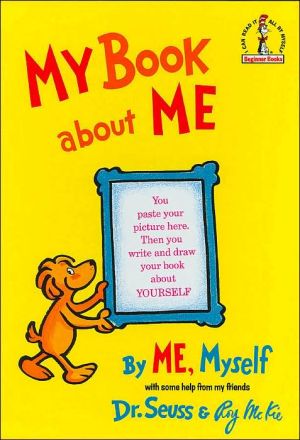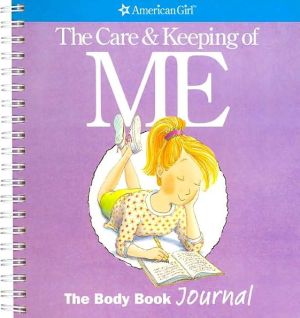Let Me Play: The Story of Title IX: The Law That Changed The Future of Girls in America
Can girls play softball? Can girls be school crossing guards? Can girls play basketball or ice hockey or soccer? Can girls become lawyers or doctors or engineers?\ Of course they can...\ today. But just a few decades ago, opportunities for girls were far more limited, not because they weren't capable of playing or didn't want to become doctors or lawyers, but because they weren't allowed to. Then quietly, in 1972, something momentous happened: Congress passed a law called "Title IX," forever...
Search in google:
Can girls play softball? Can girls be school crossing guards? Can girls play basketball or ice hockey or soccer? Can girls become lawyers or doctors or engineers?Of course they can...today. But just a few decades ago, opportunities for girls were far more limited, not because they weren't capable of playing or didn't want to become doctors or lawyers, but because they weren't allowed to. Then quietly, in 1972, something momentous happened: Congress passed a law called "Title IX," forever changing the lives of American girls.Hundreds of determined lawmakers, teachers, parents, and athletes carefully plotted to ensure that the law was passed, protected, and enforced. Time and time again, they were pushed back by erce opposition. But as a result of their perseverance, millions of American girls can now play sports. Young women make up half of the nation's medical and law students, and star on the best basketball, soccer, and softball teams in the world. This small law made a huge difference.From the Sibert Honor-winning author of Six Days in October comes this powerful tale of courage and persistence, the stories of the people who believed that girls could do anything — and were willing to fight to prove it.A Junior Library Guild SelectionPublishers WeeklyThree books demonstrate a host of individuals who offer inspiration. Let Me Play: The Story of Title IX, the Law that Changed the Future of Girls in America by Karen Blumenthal, author of Six Days in October, explains how pivotal the year 1972 was for women, with both the passage of the ERA and Title IX. As Blumenthal points out, Title IX was not just about sports. She describes the law's impact on everything from basketball to science and math classes. Profiles of individuals give the dramatic changes a human face, from Myra Bradwell, the first female lawyer in America, to Ruth Ginsburg's valiant struggle to get into a law firm, let alone make it all the way to the U.S. Supreme Court. A Title IX timeline and a "Then and Now" contrast demonstrates how far females have come in American society. Copyright 2005 Reed Business Information.
Chapter One: The Champion\ "I feel cofident that in the years ahead many of the remaining outmoded barriers to women's aspirations will disappear."\ — Eleanor Roosevelt, chairwoman of President John F. Kennedy's Commission on the Status of Women, 1962\ \ Perched at the starting blocks, about to compete for the United States at the 1964 Olympic Games in Tokyo, Japan, champion swimmer Donna de Varona gathered her thoughts.\ Four years earlier, as a tiny thirteen-year-old, she had been the youngest member of the 1960 U.S. Olympic team. At fourteen she was featured on the cover of Sports Illustrated. The magazine called her "without question, the best all-around woman swimmer in the world."\ Across America many cities were in turmoil as African Americans rallied and demonstrated for basic civil rights. A few women were beginning to speak out for more opportunities.\ But Donna's life was a blur of school and sport, including at least four hours of swimming a day, six days a week. Her dad, an insurance salesman, and her mom, who worked at a library, had sacriÞced so their second child could shine. The family of six moved to Santa Clara, California, from Lafayette so Donna could train at a world-class swim club. They scrimped to pay for coaching and trips to swim meets in Japan, Europe, and South America.\ Donna's progress was remarkable. By her midteens she had broken numerous U.S. and world records. Most notably, she was the world record holder in the most challenging of swimming events, the 400-meter medley, a grueling combination of butterfly, backstroke, breaststroke, and freestyle laps. Now, at seventeen, she was competing for the ultimate prize: Olympic gold.\ Night after night, she had rehearsed this moment just before she went to sleep. "I've got my head on the pillow and I'm in that Tokyo pool. I say to myself, 'What have those seven years of work been for? You know you're in shape. There is no reason anyone should beat you.'"\ Donna's first love had not been swimming, but baseball. In elementary school she hurried out after school to join the boys in pickup games. But when the boys moved up to Little League, girls weren't allowed on their teams. All she could do was collect the bats. She quit after one season because "being that close and not being able to play hurt too much."\ After her older brother hurt his knee and began swimming as part of his rehabilitation, she followed him to the pool and found her sport. She swam in her first meet at the age of ten.\ In the pool she grew into a focused athlete, determined, intense, and competitive. But on dry land she took great pains to look pretty and well dressed like the other girls. After practice in the morning, she would rush to the locker room and sit on the concrete floor, styling her hair under a hooded hair dryer while she ate scrambled eggs from a Thermos.\ In the 1960s girls were known as the "weaker" or "fairer" sex, and they were supposed to be dainty, not strong. Very self-conscious about her muscular, sculptured arms, Donna hid them under long sleeves at school. "I really wanted to look feminine," she said.\ In the pool, however, she was all strength. When the starter's gun popped in October 1964, she whipped through her two best strokes, the butterþy and the backstroke, and then endured the breaststroke. As she made the turn for the last leg, she let loose. "I just want to go," she said in Life magazine. "That's what I'm here for — to get that gold medal, boy. It's free-style. Gung ho. Guts out."\ She won, setting an Olympic record.\ Donna returned home as a national hero with two gold medals, one in the medley and another in a 400-meter relay. The Associated Press and United Press International both named her "Most Outstanding Female Athlete of the Year." She was an athlete on top of the world.\ Then, suddenly, her swimming career was over.\ The best boy swimmers were offered scholarships to continue swimming in college. But there were no such scholarships for the best girls in the world. Few colleges even had any kind of women's sports program. Though she was just a high school senior, "there was no future — no scholarships, no programs, no way I could continue to swim," she said.\ Donna knew that if she wanted to be as successful in the world as she had been in the pool, she needed a college education just like the men did — but she would have to pay for it herself. Society assumed that educating men was more important than educating women. That realization made her feel like her hard work had been discounted, "that what I'd won seemed somehow cheaper," she said. "It was a devastating feeling."\ The experience made her determined to make a difference, to ensure that other girls wouldn't face the same discounted future. Many other women and men were beginning to share a similar determination. Across America too many women were being denied a chance to reach their true potential. Too much precious American talent was being wasted in too many areas. From California to Washington, D.C., they were beginning to call for change.\ Copyright © 2005 by Karen Blumenthal
\ Publishers WeeklyThree books demonstrate a host of individuals who offer inspiration. Let Me Play: The Story of Title IX, the Law that Changed the Future of Girls in America by Karen Blumenthal, author of Six Days in October, explains how pivotal the year 1972 was for women, with both the passage of the ERA and Title IX. As Blumenthal points out, Title IX was not just about sports. She describes the law's impact on everything from basketball to science and math classes. Profiles of individuals give the dramatic changes a human face, from Myra Bradwell, the first female lawyer in America, to Ruth Ginsburg's valiant struggle to get into a law firm, let alone make it all the way to the U.S. Supreme Court. A Title IX timeline and a "Then and Now" contrast demonstrates how far females have come in American society. Copyright 2005 Reed Business Information.\ \ \ \ \ VOYAAs they lace up their cleats and strap on their equipment, few girls are thinking about the law that gives them the opportunity to play sports at every level from Little League to the pros. With that in mind, Blumenthal writes one of the few histories of Title IX, the educational amendment granting equal opportunities, particularly in athletics, to girls and women. Placing the act within the context of feminism and the civil rights movement, Blumenthal uses first-person accounts from the creators of the amendment, most notably Representatives Edith Green (D-Oregon) and Patsy Mink (D-Hawaii), to personalize the legislative process. Period cartoons and photographs offer a glimpse of the prejudice against female athletes of which contemporary girls have little firsthand knowledge. Her profiles of female athletes whose careers were cut short before Title IX-most notably Donna de Verona-contrast with those of today's superstars, such as Mia Hamm and Lisa Leslie, illustrating the impact that this law has had on the lives of American women. Blumenthal's strength as a historian is in documentation; she explains her research practices and cites two sources for anything that she presents as fact. Some history might be unfamiliar to readers without a strong history background (her references to the Watergate scandal might be unfamiliar), but overall there is just enough information to provide context. Her personable tone makes this book read like a conversation with a knowledgeable friend, creating an interesting and accessible read for book reports and research assignments. VOYA CODES: 3Q 2P M (Readable without serious defects; For the YA with a special interest in the subject; Middle School,defined as grades 6 to 8). 2005, Atheneum/S & S, 160p.; Index. Illus. Photos. Charts. Biblio. Source Notes. Further Reading. Chronology., Ages 11 to 14. \ —Vikki C. Terrile\ \ \ Children's LiteratureTitle IX, requiring equal opportunities for female and male students in federally-funded schools passed Congress in 1972. The lives of girls and women have been greatly impacted by that "little law." A revolution followed as parents, teachers, coaches and kids worked to make sure that the opportunities opened to them by this new law were actually available. It took lots of dedication and hard work, but today about 3 million girls participate in high school sports, up from less than 300,000 in 1972. Young women were not only suiting up for basketball, baseball, volleyball and soccer, they were entering college and graduate school in record numbers. There were soon numerous female doctors, lawyers and PhDs. This transformation was not without its challenges and failures. Sometimes these conflicts took place in the schools, in Congress or even in the U.S. courts. Title IX is one of the most important civil rights laws in our country. It is important to be vigilante because that which was given, can be taken away. Patsy Mink, the first woman of color in the US Congress, warned that these opportunities can be taken away if not guarded. The author concludes the book with a personal note and a quote from Edith Green, the mother of Title IX: "The trouble with every generation is that they haven't read the minutes of the last meeting." 2005, Atheneum Books for Young Readers, Ages 8 up. \ —Kristin Harris\ \ \ \ \ School Library JournalGr 7 Up-A fascinating look at the birth, growth, stagnation, and final emergence of Title IX. While acknowledging the controversy surrounding this law, the author is unwaveringly supportive of its passage and implementation. Interesting and easy-to-follow chapters highlight the process of creating, revising, fighting for, and ultimately passing this legislation that gave girls and women equal access to physical-education classes, gymnasiums, universities, and graduate schools. Human-interest stories personalize the issues, and photographs of congresswomen fighting for equal opportunities for girls, women demonstrating, and the ultimate victory-a woman on the cover of Sports Illustrated-show how challenging, yet ultimately rewarding, the battle has been. Charts depict amazing statistics about the increase in athletic participation by females from 1970 to 2001. Cartoons show the humorous but painfully true attitudes of our culture toward women as they have strived to achieve equality in this country. The book closes with a "Then and Now" section highlighting the changes Title IX has brought about. Lynn M. Messina's Sports in America (H. W. Wilson, 2001) and Victoria Sherrow's Encyclopedia of Women and Sports (ABC-CLIO, 1996) both offer bits of information, but nothing out there comes close to Blumenthal's portrait of the emergence of women athletes in our society.-Julie Webb, Shelby County High School, Shelbyville, KY Copyright 2005 Reed Business Information.\ \ \ \ \ Kirkus ReviewsThe history of the small but wildly influential amendment known as Title IX receives a thoughtful, enlightening and inspiring treatment from the Sibert Honor-winning Blumenthal. Her narrative begins with the story of Donna de Varona, the Olympic gold medal-winning swimmer who watched her male colleagues receive swimming scholarships to college even as her own career abruptly ended. From this miscarriage of justice to the present, the text compellingly lays forth both the legislative fight to enact Title IX and the struggle to interpret the rules subsequent to its passage. Although the revolution Title IX created on the sports field gets the majority of the attention, the author is quite clear in detailing the overall educational advances women were able to make thanks to Title IX. This really splendid story receives absolutely criminal treatment from the designer, however, allowing page turns and sidebars to split sentences over whole pages, resulting in a sadly fragmented effect. Magnificent backmatter, including a time line, "then and now" comments from key players, extensive source notes, and suggested resources for further information, complement the narrative in making this a nearly perfect book, were it not for the execrable design. (Nonfiction. 10 )\ \








